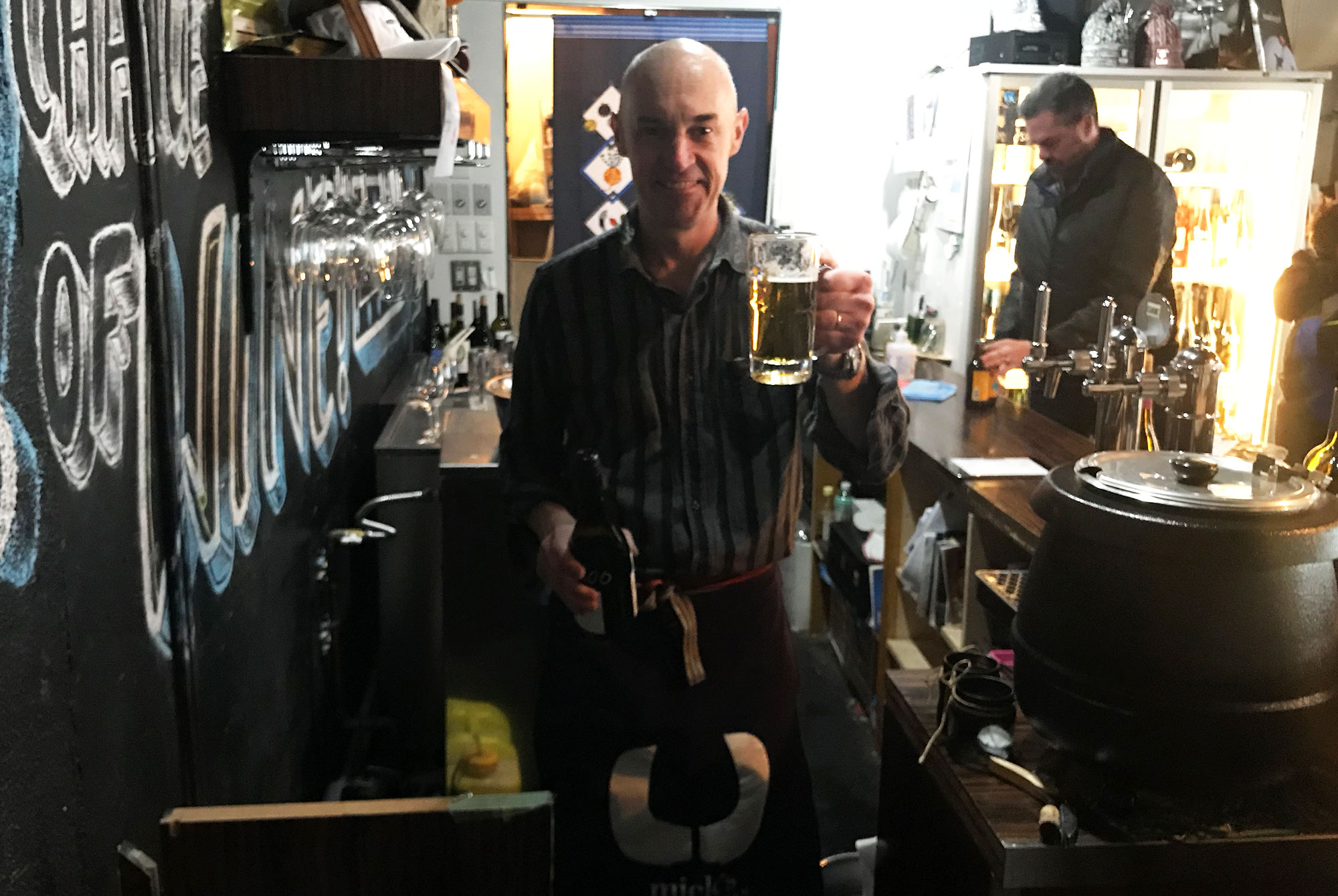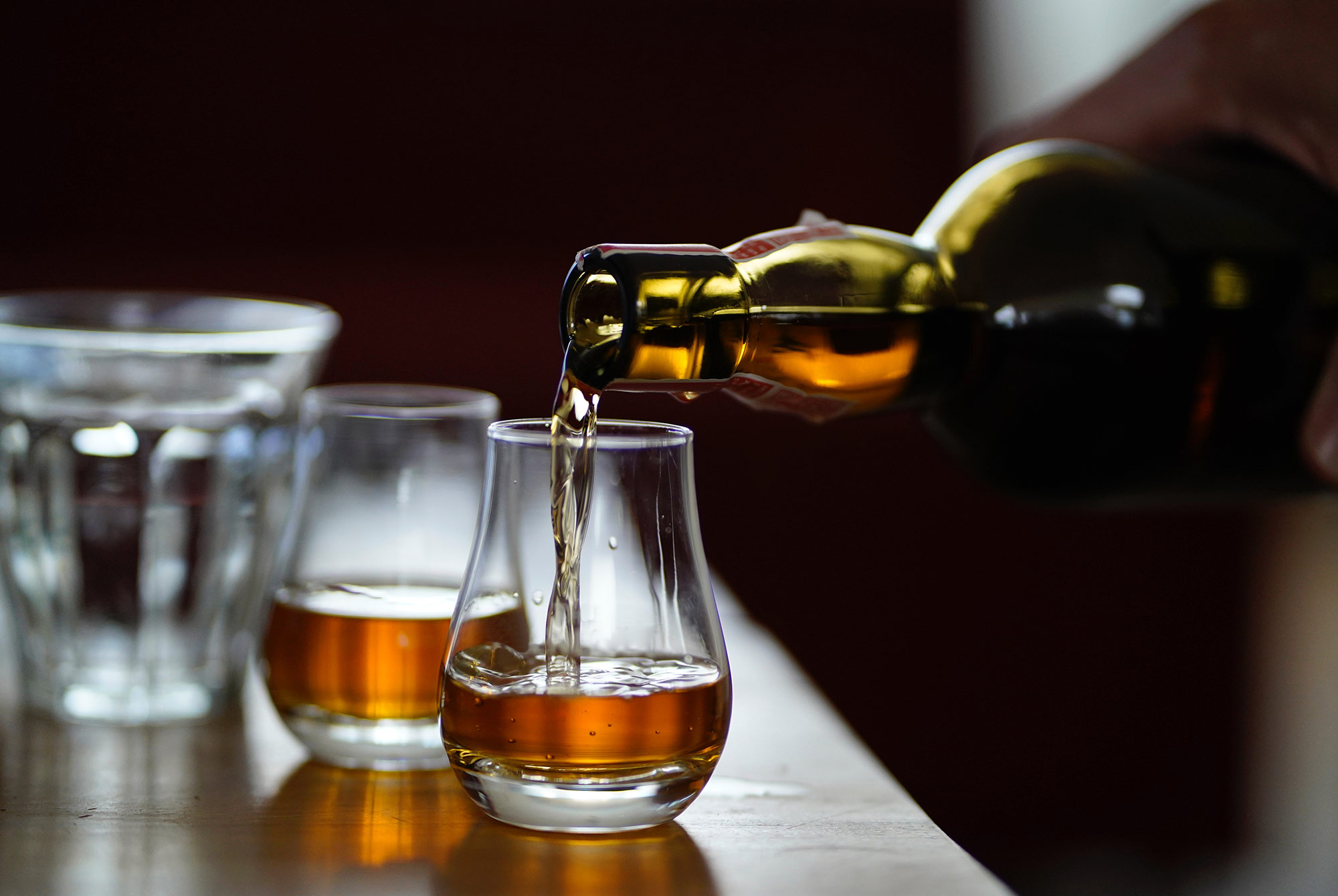Shop
Learn About Japanese Beer with Mick Nippard
Kanpai!
Nine hours north of Tokyo, by train, is a winter wonderland known as Niseko. I didn’t go there to ski or snowboard, which is what 99.9% of people do there, but because I was on vacation with three of my friends, and that’s what they wanted to do. For two days, I bummed around the Japanese ski town, experiencing the Eastern version of Aspen and eating ramen.
On my first night, I stumbled into Mick’s Place. I would’ve skipped the unassuming bar entirely, except the restaurant next door wouldn’t seat us immediately and told us we could drink at Mick’s until our table was ready. Upon entering Mick’s, I met Mick himself, and was surprised to see an entire fridge full of Japanese craft beers. In the back of the bar, down a thin corridor, were shelves of terrific Australian wines, as well as several bottles of fine sake, and rare Japanese whiskeys. For the editor of a beverage magazine, it was a gold mine. The next day, while my friends went up the mountain, I sat down with Mick to talk about his history in service, the Japanese craft beer scene, and how a gregarious Aussie ended up running one of Asia’s best bars in Niseko, Japan.
Kenny Gould: How long have you been in Niseko?
Mick Nippard: This is my 10th season here in the shop, and my 14th in Niseko. I met my wife in Sapporo. I first came on a working visa a long time ago. I came to Tokyo, but it was too much. It was too busy, too hot, too everything. I got up here and just said, wow. This is a cool place. It’s normal, there are parks, it’s green. The weather is about ten degrees cooler without the humidity. I got a job working in the nightclub area in town. I was the token white guy. Then I got a job teaching, and I was lucky to get that job because I could travel the whole island.
My wife wanted to learn English and one thing lead to another. She eventually wanted to come to Australia. When my visa was up, we went back. That was in 1996. When we had two kids, we decided that we wanted them to grow up near their grandparents. We moved back and there was never an option that we’d live anywhere but Sapporo. Because what’s the point of coming all this way and then living in Tokyo?
KG: And how did you get the idea for a bar?
MN: My background is in service. For the first season, I ran a restaurant around the corner, and then the guy who owned that restaurant went in with three partners and bought this building. I controlled all the food and beverage in this building for two seasons. This space became available about 10 years ago and I thought, “Don’t die wondering, let’s have a go.” That’s how I started. For five years this was Niseko Cellars. Then I changed from just a retail shop, so you could take away or buy to drink here.
KG: And that’s when you added beer?
MN: The first three years I had bullshit beers. You know, commercial beers. Then I thought about it and I realized, you know, I want to use my money to the best of my ability to give people the best they can get. So I want to give my money not to multinationals, but to individuals. I sourced out some guys. I met some people and just started craft beer. Also, my brother had tried craft in Australia. He gave it a go in ’04, ’05, and by ’06, ’07, he had to give it up. It was before the boom. I thought, if I can succeed, everyone’s a winner.
KG: Have people responded well?
MN: There’s a lot of Aussie’s in this town, and I also see a lot of ex-pat guys from Tokyo and New Zealand. There’s a world phenomenon of beer, and that’s what they want. In addition to the beers I have in the fridge, I have two taps. One is the Sapporo Classic. That’s not a craft beer, but it’s only available on this island. You can’t get Classic anywhere in the world except Hokkaido. Somebody told me it’s slowly seeping into Honchu, the main island, but for now it’s our Hokkaido beer made from our Hokkaido stuff. The other beer I have right now is Hop Kotan. I met this guy at a craft beer thing that takes place in Sapporo every year. I wanted bottles, but he’s too small for that. Right now, he’s only doing kegs. He’s maybe 6 months old.
KG: What’s the beer scene like in Japan?
MN: It’s small. A mate of mine, Hamilton, owns Mikkeller Tokyo. He worked for me. He did a summer in here. On the whole, Japanese drink standard beers, and the craft beer scene is micro.
But it’s changing. People want a choice. Japan is interesting though because you look at Australia and realize that the big guys were slow to get on the bandwagon, even making a pale ale. They missed the boat. But here, they haven’t. They’ve said, “Wow, we’re losing market share, so we’ve got to make new beers.” And they have. So the big guys aren’t sitting on the back foot and they’re not buying the small guys. They’re actually experimenting.
KG: That’s a unique approach.
MN: In Sapporo, where I live, shit, five years ago I could count on one hand the amount of craft beer bars. Now there’s double that. And people are putting in taps, or they might have a selection of one or two in the fridge. The hardest part is stock.
Japan is a small country, and to put in another tap, it’s expensive. The big guys own the taps so they’re not going to give them away nicely. When I put mine in, I asked for two taps on my terms. I said, I want Sapporo Classic and a guest beer. And they said, “Uhhhhh…” But eventually, they said yes. And that’s rare. It’s virtually impossible to get that. You can get your own taps online, but then you have to install the systems. Hamilton offered me a system, but I still have customers who want Classic, so this is a win-win.
KG: So things seem to be shifting.
MN: Maybe. The good breweries are really good. The bad ones are just awful. It’s like, give up boys, go home. It’s really hard to get a brewery license here. They don’t give them away easily. A friend told me that under Japanese laws, you can only make alcohol to 0.9 percent. If that’s true, that’s bullshit. It makes no sense at all. They’re trying to protect the market. Most “homebrewers” sell their sets online before they leave the country.
Liked this article? Sign up for our newsletter to get the best craft beer writing on the web delivered straight to your inbox.




